This is the first of three features that I will be doing this pre-season regarding an analysis of fantasy Wide Receivers.
In the two future segments I will analyze Sophomore Wide Receivers (from the Class of 2024) and look closely at what I call the QB-to-WR Index.
In this feature, I will attempt to look at the empirical receiving data from 2024 (in terms of targets, receptions and fantasy points) to help build a model (or at least a starting point) for ranking the fantasy wide receivers headed into 2025.

More specifically, this feature is built around a number of top-50 charts. My goal is to use the data represented in these tables to begin a guided tour that will hopefully get us to our destination: an initial ranking of fantasy wide receivers.
The charts include the final 2024 rankings of wide receivers in the following categories: Fantasy Points, Receptions, Targets, Team Share, Conversion Rate, and Fantasy Points Per Target.
Note that the tables below reference the 2024 team for which each player played last season.
Lets start by simply looking at the wide receivers who scored the most points in fantasy in 2024. Note that the point totals listed below represent both standard scoring (0.1 point for each yard rushing/receiving and 6 points per touchdown) as well as point per reception (PPR) -- standard PLUS one bonus point per reception totals. The data is sorted by PPR.
Fantasy Points
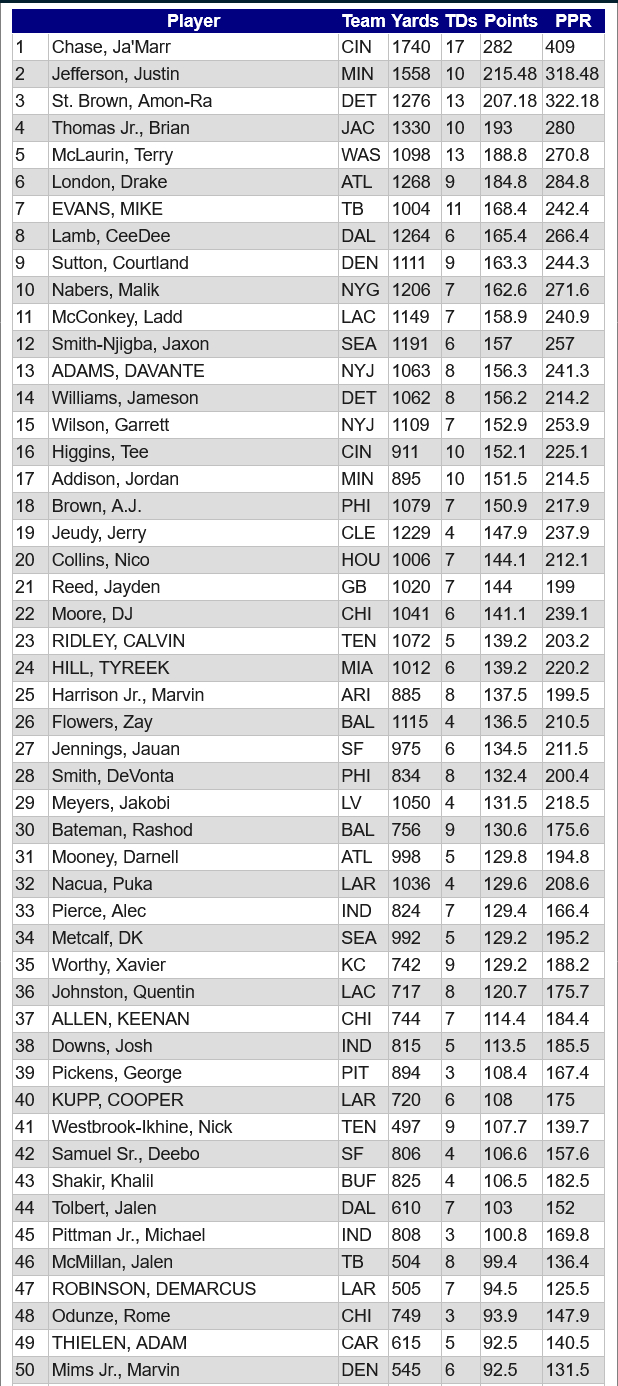
Observations:
There is nothing truly earth-shattering here, as when we look at the total numbers at a high level, we simply see the top 50 fantasy WRs from last season. Obviously most of these players will be high in the 2025 rankings with the presumption that they will have another successful fantasy season. What jumps out immediately is that Ja'Marr Chase was in a league all his own, as no other WR is even close in either scoring category.
Aside from the usual studs, there were a number of surprise players such as Brian Thomas Jr, Ladd McConkey, Malik Nabers, and Jauan Jennings who all posted start-worthy numbers -- that is, finished as at worst a WR2 in 12-team leagues -- but were largely overlooked last year in fantasy drafts. Speaking of which... note that CeeDee Lamb and DaVante Adams did indeed finish as WR8 and WR13 respectively in standard formats, making them genuine fantasy WR1-2 despite the perception that they were "busts" in 2024.
Some of the more disappointing players were Cooper Kupp, Marvin Harrison Jr, Jaylen Waddle, and Deebo Samuel Jr. who were typically drafted with high selections in fantasy drafts yet seriously under-performed (in many cases due to injury).
Receptions
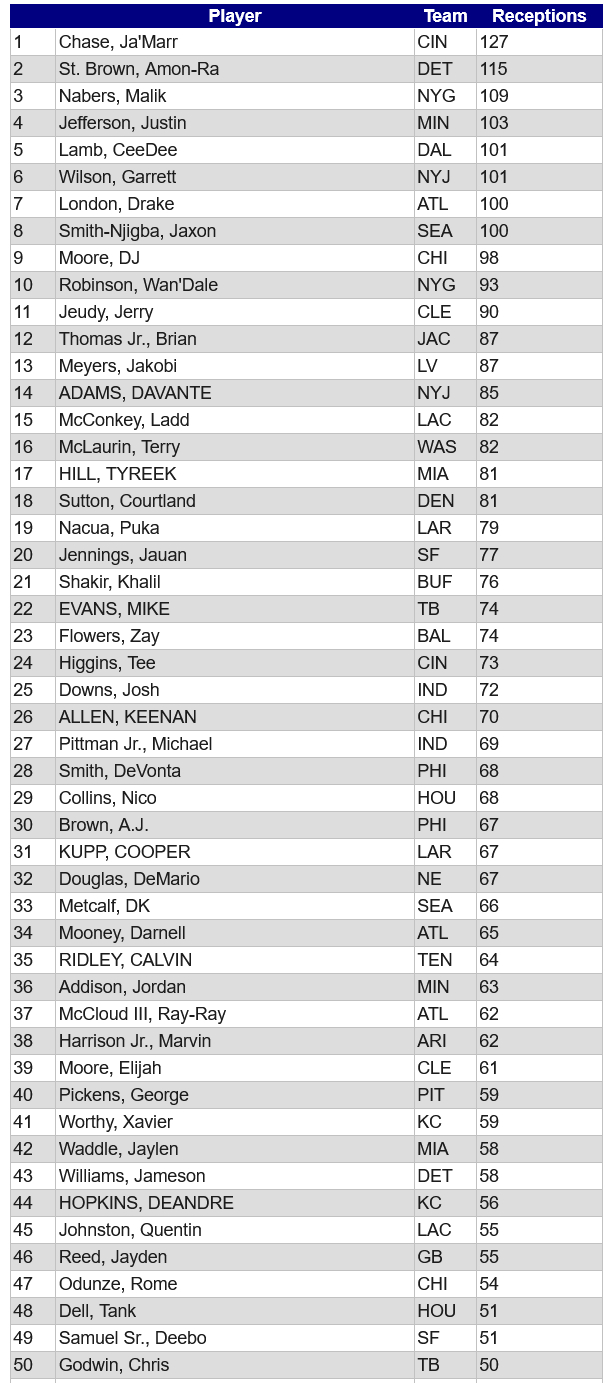
Observations:
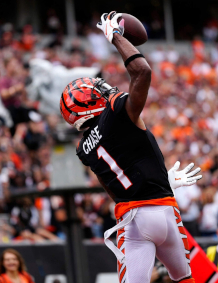
Receptions are key because not only do they represent opportunities for yards and TDs -- but they also directly correlate to fantasy points in PPR (Point Per Reception) formats.
A good example of the variation in the two formats is Amon-Ra St. Brown who finished essentially 3rd (behind La'Marr Chase) in our first chart in terms of standard scoring -- but was 2nd (again, behind Chase) in receptions and also PPR scoring.
Note that Chase was the unquestioned top dog in both formats and reception totals, which is why you are rightfully seeing him ranked as WR1 in most formats.
What does that mean?
Make sure you look closely at the scoring rules in your league. If it is PPR then players like Chase and St. Brown are even more valuable. I am talking valuable enough to draft in the top 3-4 picks as opposed to waiting until later in the 1st round. Even a receiver like Drake London is worth picking no later than early in the 2nd round in PPR formats.
Targets
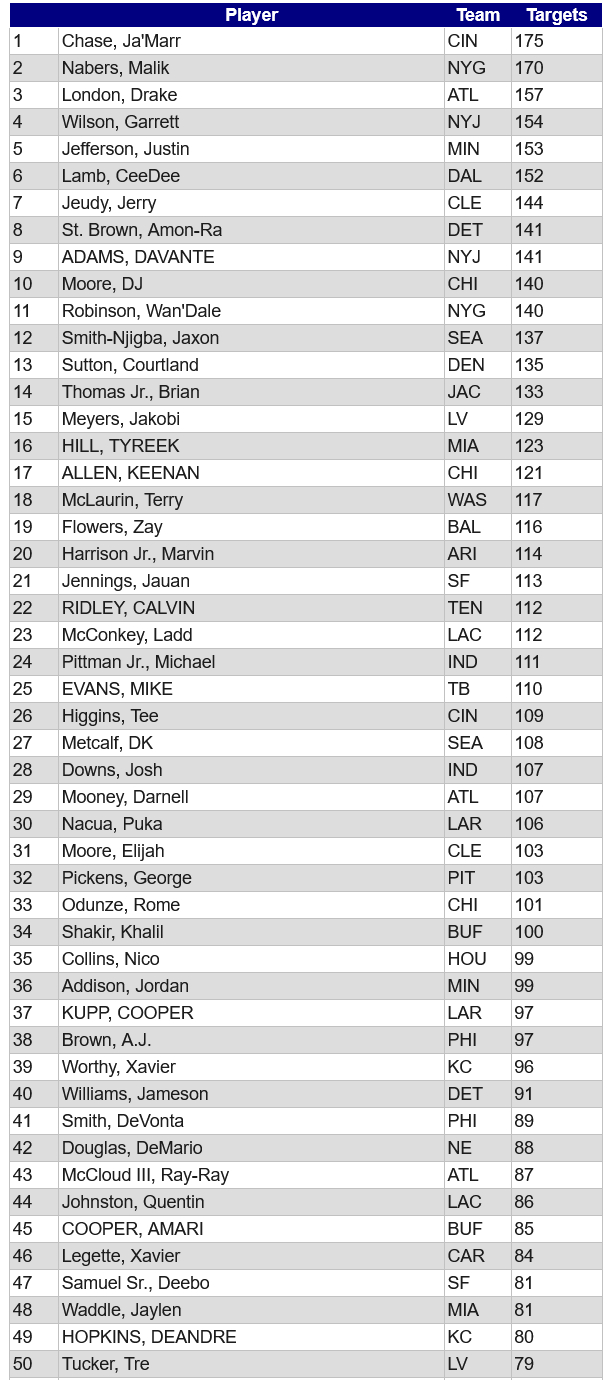
Observations:
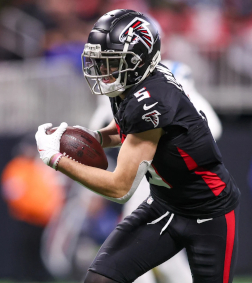
In a way, targets are even more interesting numbers to look at than receptions. I think of a reception as being the successful outcome of a target. Targets represent opportunities.
The mantra in fantasy, of course, is not to assume that opportunity leads to production. While that is also true with the targets, of course, it makes sense that there is a direct correlation to receivers who were heavily targeted in the passing game with those who had strong fantasy seasons.
Jauan Jennings, Zay Flowers, Jakobi Meyers, Wan'Dale Robinson, Keenan Allen, and Michael Pittman Jr. are the only receivers among our top 25 most-targeted, who did NOT also make the top 25 list in fantasy points scored.
From that perspective, these players had the most disappointing seasons of all, because the opportunities were there. Moreover, since they failed to produce on the volume of opportunities with which they were presented, there is a chance that they will see a significant decline in opportunities (targets) this year. Take Wan'Dale Robinson. His situation may be unique given his huge volume with minimal results (and admittedly horrific QB situation), but the point must be made that receivers who are targeted a lot (and may even catch high percentage of their targets) may not necessarily be fantasy studs.
Team Share
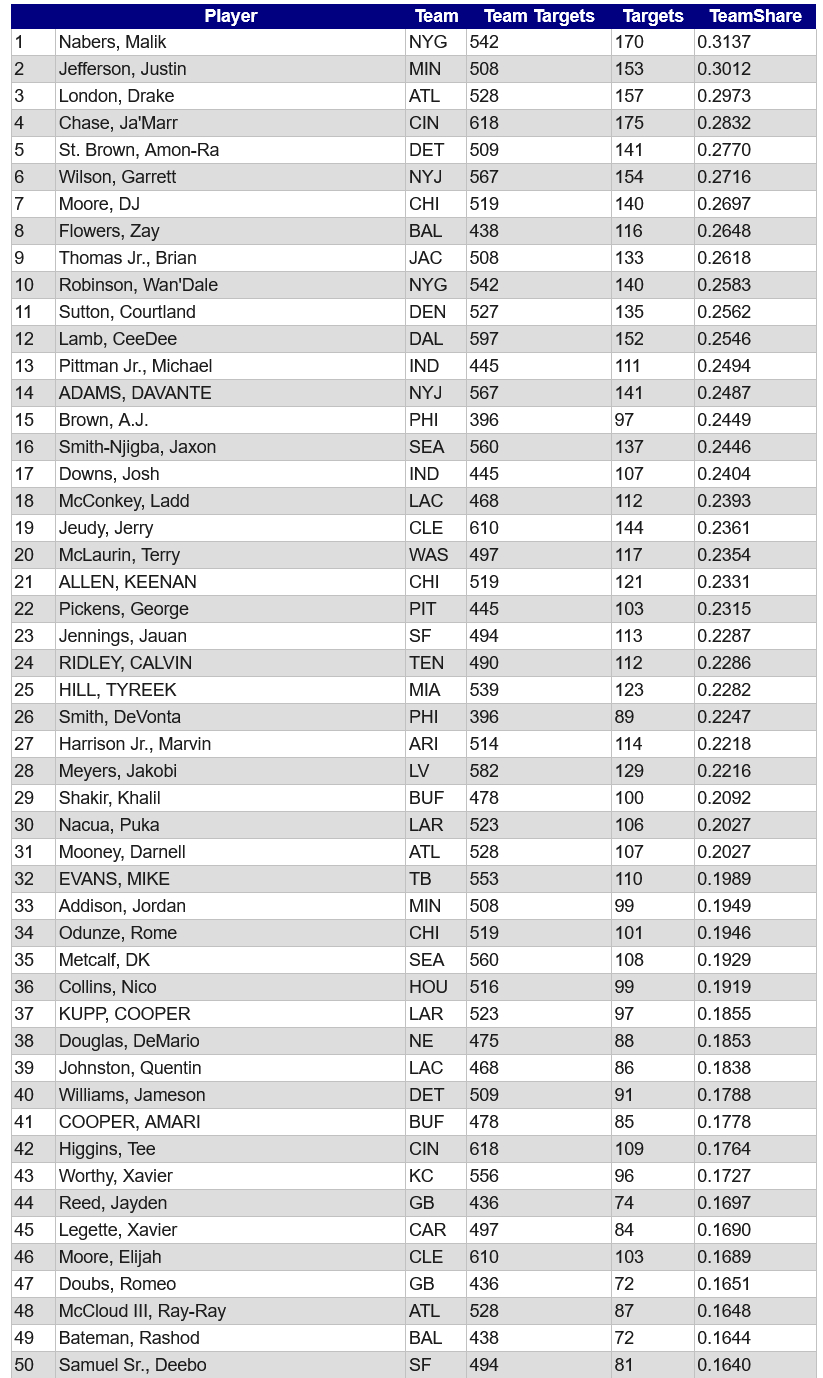
Observations:
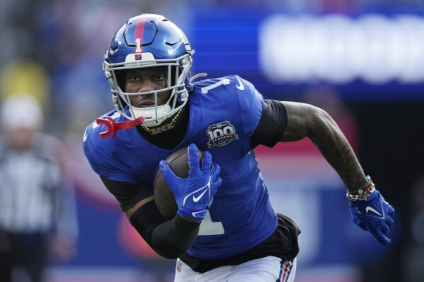
I find this chart to be more interesting than necessarily useful from a fantasy perspective. What it does is emphasize how important that a given receiver was to his team in terms of the percentage of targets went his way.
What this does is emphasize not only which receivers were the favorite targets of their respective teams -- but which ones became the apple's eye of their quarterback.
It is not surprising to see at the top of the list Adams and Hill. What is a bit surprising in #7, Michael Pittman who led the Colts with over 30% of the team's targets.
I suppose the value from a fantasy perspective here lies in identifying those teams which may evolve into a more pass-friendly offense in 2024 or whose QB situation may be better.
I'll look at that more closely in a future installment on Taking a Look at the QB-to-WR Index. So be on the lookout for that segment in the next week or so.
Conversely, be careful to look closely at teams that added immediate reinforcements -- or players who have moved on. Keep a close eye on free agency to see what moves may have the greatest impact.
Conversion Rate
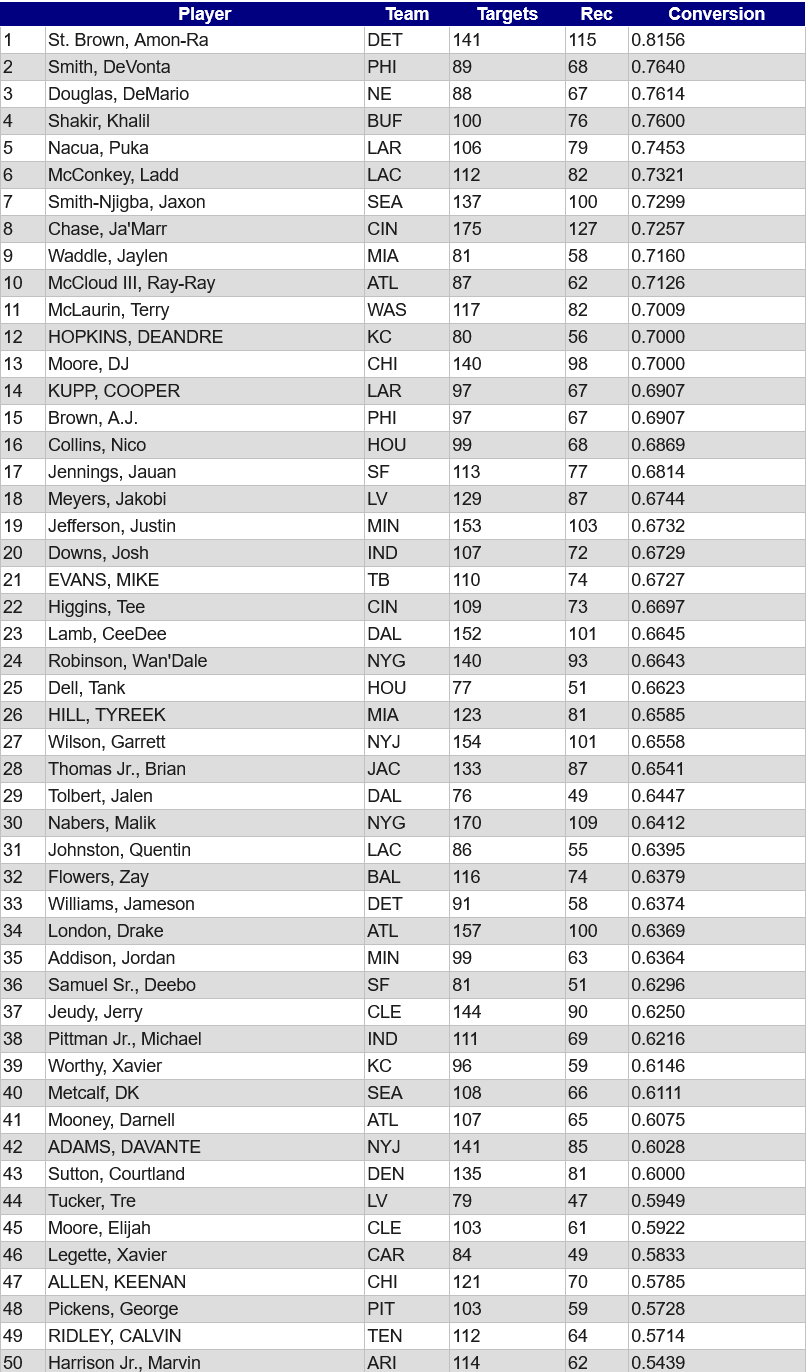
Observations:
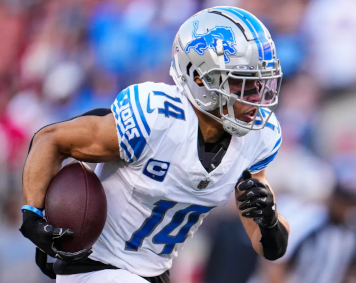
Think of this as the list of receivers with the best batting average. That is, the receivers who converted the greatest percentage of their at-bats (targets) into hits (receptions). For this exercise, I have excluded players who did not have at least 75 targets.
I must admit that I was rather surprised to see the top 10 list. It is especially interesting that Robinson ranked #1. Still, Lamb's presence in the top 5 here -- especially given his ridiculous volume -- is yet another sign that he is THE MAN headed into 2024.
Fantasy Points Per Target
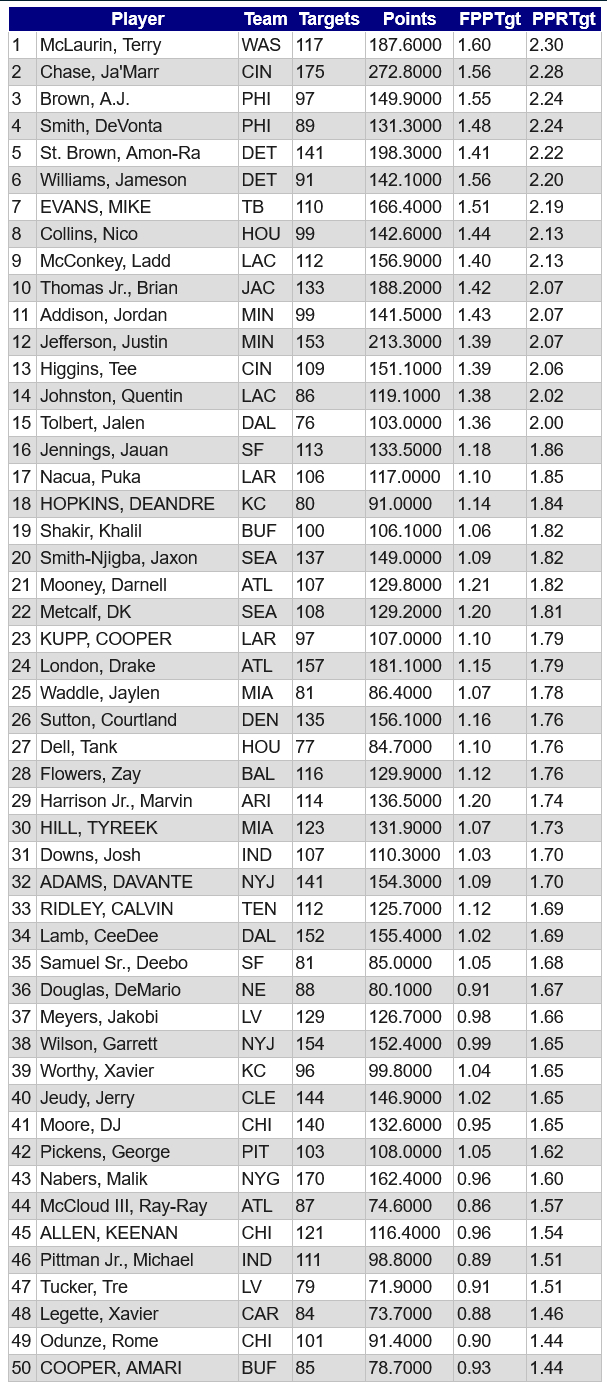
Observations:
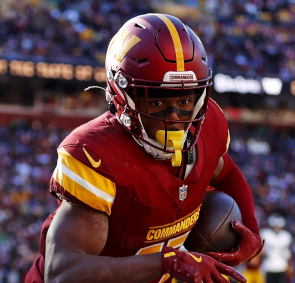
The list above is for a minimum of 75 targets. The Points Per Target value was rounded to two digits to the right of the decimal, but all sorting was performed prior to the rounding -- and no two players had an identical value prior to the rounding. That is, there were no ties despite the identical values listed above -- and the players are all listed in the correct order.
After clarifying all that, I must say that this is one of my favorite statistics when looking at fantasy wide receivers as it truly measures which players made the most (fantasy points) of the opportunities presented to them (targets). The key to identifying fantasy relevance is to identify which players appear on this Fantasy Points Per Target chart as well as the Total Targets chart. This will present you with the list of players who operated at a high fantasy level due to both volume and production.
Using such a formula gives us the following players who had the highest combined score on both charts:
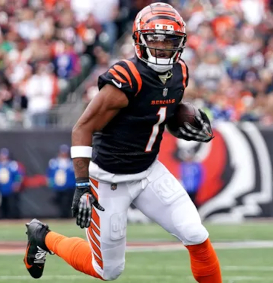
1. Ja'Marr Chase
2. Amon-Ra St. BrownJa'Marr Chase
3. Justin Jefferson
4. Terry McLaurin
5. Brian Thomas Jr.
6. Drake London
7. Jaxon Smith-Njigba
8. Ladd McConkey
9. Mike Evans
10. Jauan Jennings
11. Tee Higgins
12. CeeDee Lamb
13. Courland Sutton
14. DaVante Adams
15. AJ Brown
16. Garrett Wilson
17. DeVonta Smith
18. Nico Collins
19. Malik Nabers
20. Zay Flowers
21. Tyreek Hill
22. Jordan Addison
23. Jameson Williams
24. Puka Nacua
25. DJ Moore
26. Jerry Jeudy
27. Darnell Mooney
28. Marvin Harrison Jr
29. DK Metcalf
30. Jakobi Meyers
31. Khalil Shakir
32. Calvin Ridley
33. Quentin Johnston
34. Josh Downs
35. Cooper Kupp
36. Wan'Dale Robinson
37. Keenan Allen
38. DeAndre Hopkins
39. Jalen Tolbert
40. Michael Pittman Jr
41. George Pickens
42. Jaylen Waddle
43. DeMario Douglas
44. Xavier Worthy
45. Deebo Samuel Sr
46. Rome Odunze
47. Elijah Moore
48. Ray-Ray McCloud II
I
49. Xavier Legette
50. Amari Cooper
Obviously this is far from scientific and fails to take other key factors (such as injuries, possibility of unusually bad/good season, new team, etc.) into account. But I think it represents an interesting and defendable baseline.